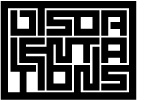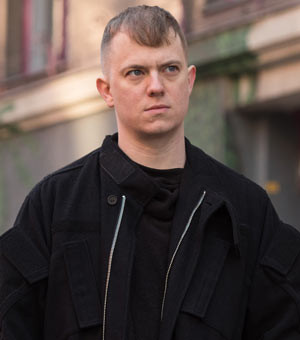A Dialogue on Geng Yini’s Paintings by Two of Her Subjects
by Travis Jeppesen on July 21, 2020
Two rodents walk into an exhibition of Geng Yini’s paintings. The prairie dog is a curator, the capybara is an art historian.
CAPYBARA: First of all, we have to state the obvious.
PRAIRIE DOG: I know exactly what you’re going to say.
CAPYBARA: That really – to my knowledge, at least – this is the only painter – whether we’re talking about contemporary artists or extending back into the entire canon – the only painter who has turned their attention to our species in any meaningful way.
PRAIRIE DOG: I would go so far as to assert that Geng has humanized us in a way.
CAPYBARA: Without, of course, dragging us down to the human level. Which is what makes her depictions of our activities, our way of life all the more endearing and, dare I say, poetic.
PRAIRIE DOG: I would argue further that she often manages to make her human subjects appear rodent-like.
CAPYBARA: Let us back away from these vague generalizations and get specific. We are, after all, standing before this impressive selection of some of the artist’s most important works on canvas.
PRAIRIE DOG: That we are. Well, to turn to one of my personal favorites…
CAPYBARA: And mine, too: sarcophilus harrisii.
PRAIRIE DOG: Better known as the Tasmanian devil.
CAPYBARA: A far more elegant creature than is often given credit.
PRAIRIE DOG: In this painting, we see the two open-snouted rodents passing a tiny yellow ball between their mouths.
CAPYBARA: Or is that ball actually… a… Well, what would you call it? A blob?
PRAIRIE DOG: A bob. That’s what Geng Yini herself calls them.
CAPYBARA: What exactly is a bob?
PRAIRIE DOG: A round thing that floats. Is how I’d define it anyway. Bobs are one of Geng’s chief muses – to the point of obsession, even. She sees bobs everywhere she looks, in nature. Some of those bobs even have faces. Oftentimes, the faces are merely inferred.
CAPYBARA: Big round bulbous things.
PRAIRIE DOG: Nearly always a size that can be held in your paw – or, in the case of certain lower species, the hand. For tactility is key here. A bob might be found in, say, a cactus – a living object with violently contrasting tactile qualities. But occasionally, in a number of Geng’s paintings, bobs are either sculptured or conjured up from the raw matter of indecipherability…
CAPYBARA: …effectively linking the thick, impasto-like sludges of paint – so rarely found in figurative painting – the materiality of the canvas – to the painting’s ultimate subject matter…
PRAIRIE DOG: You complete my sentences so well! And while we’re on the subject of, well, subject matter, because there is such a great diversity in Geng’s work, might I just posit that Geng’s painterly endeavors ultimately reflect an obsession with the thingness of the world: whether those things in question be animals or, well, bobs.
CAPYBARA: Is that “thingness” in the Heideggerian sense?
PRAIRIE DOG: No. For they are devoid of the luxury of not-functioning. There is too much referentiality at stake here.
CAPYBARA: You’re awfully loquacious for a prairie dog.
PRAIRIE DOG: Perhaps we are focusing too much on just the objects depicted within the paintings. Because Geng Yini, what she ultimately paints are scenes. There is almost always a narrative implicit in these paintings – though of course never an overstated one. Always a lingering mystery, and of course, often quite humorous. You can almost hear the laughter of a Tasmanian devil coming out of so many of these paintings. Maybe it would help to discuss technique – for the way that these paintings are forged reveal a lot about these intricately constructed narratives.
CAPYBARA: Well, what’s obvious is that a montage technique is most often employed. Let’s scurry over to that painting: a bald eagle flying through the sky, a squealing beaver, a mongoose, a white deer with vampire fangs – they all converge, floating over a mountaintop. It makes all the sense in the world. No effort is required on the artist’s part to make the scene appear “natural” – rather, a turquoise blue vertical line is added to the right-paw side of the canvas, partly bisecting the squealing mongoose’s face, as though to emphasize the unnaturalness of this convergence.
PRAIRIE DOG: I love how you just used your four webbed toes to put “natural” in air quotes – there, now I’m doing the same, only with claws. Would you call paintings like this one, I don’t know… nature paintings without nature?
CAPYBARA: I don’t object to that characterization, though I’m not sure Geng Yini herself would agree with it. I mean, here we have a rather perverse example of a scene from the unnatural world, by which I mean the world of humans. In We Always Feel Sad About the Grand Festivals, the painting is split into two close-ups. On the right-paw side, a fat bearded human gaily grasps a microphone into which he spouts some song. He’s in color, but he stands before a black-and-white set of what looks to be a rather American living room, stuffed with a huge Christmas tree. Then, on the left-paw side of the canvas, we get the reaction shot: an older grandmotherly human holding, with two fingers on each hand, a handkerchief up to her eyes, as though trying to blot out the reality that is causing this migraine.
PRAIRIE DOG: Oftentimes, you can’t make sense of what’s happening, of what these strange human creatures are even doing. It’s like you’ve been thrust into this narrative that might be domestic or natural or ethereal or otherwise, but then there are all these floating components that enter into and disrupt the normality of the scene, turning it into something quite other. Something that refuses to be named.
CAPYBARA: Enigmatic is the word for paintings like these. Let us move on to this work from 2011, which ranks among my personal favorites from the artist’s entire oeuvre to date. Supervise Breakfast, it’s titled. Like many of Geng’s paintings, it includes a bit of text (actually, one of my students, a young North American beaver, is currently writing her master’s thesis on the role of text in Geng Yini’s paintings), the yellow letters squeal out at you: EAT UP THE BREAKFAST TO REVEAL THE IDENTITY OF THE BEAR. A bald human has his back to us, he is facing what we might call the painting’s two protagonists on the other side of the breakfast table: a young human female and another one in a white bear costume. They both have plates in front of them with hot dogs and bobs on them. The girl has stabbed one of the hot dogs with a fork and is munching on it at the moment that the image is “captured.” I don’t want to delve too far into exegesis here –
PRAIRIE DOG: And you are quite right not to. This humanish tendency to wish to find meaning everywhere one looks, that is exactly the sort of impulse that is coming under attack in such canvases. Geng gives us exactly the amount of information we need to know, and nothing further.
CAPYBARA: Exactly. From a human standpoint, Geng’s montaged canvases are by and large inexplicable; which is precisely what makes them art. For if things are easy to gage, to understand, they quickly get boring. Human beings, they crave explanation, and are perversely satiated by its present absence.
PRAIRIE DOG: I’m always impressed with your eloquence on these matters. But, I must confess, imbibing so much great art and discussion always leaves me famished. Shall we continue our conversation over a meal?
CAPYBARA: Yes, but let’s skip the museum café, please. They serve nothing of interest to our lot!
PRAIRIE DOG: But of course not! I was going to suggest this new place owned by a rather handsome young springhare. They do the most delightful sautéed acorns.
CAPYBARA: Oh, I’m strictly weeds these days, darling. Strictly weeds.


Leave your comment